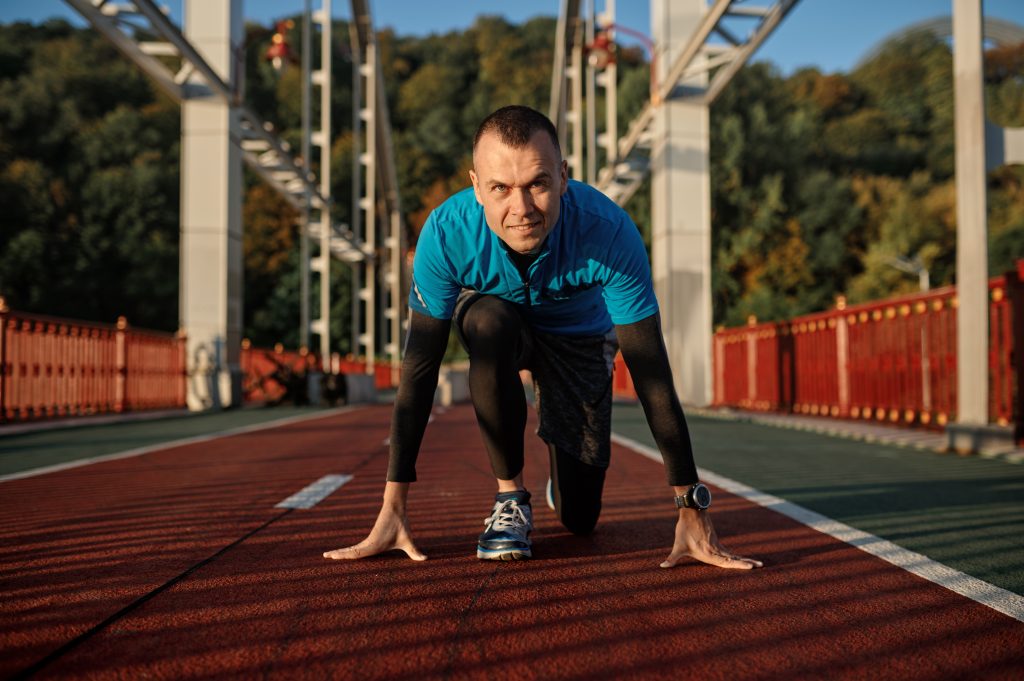The Importance Of Proper Warm-Up And Cool-Down Techniques In Sports

The right way to warm up and cool down is an important part of any sports training routine. These techniques help players get their bodies ready for competition, lower their risk of getting hurt, and improve their total performance.
Athletes warm up by doing a set of moves and routines that slowly raise their body temperature, heart rate, and blood flow. By making the muscles, tendons, and joints more flexible and improving their range of motion, this process gets them ready for the next workout. A warm-up also helps get the major muscle groups moving and increases the flow of oxygen to the working muscles, which makes them more efficient and keeps them from getting tired too soon.
Cool-down routines, on the other hand, are done after hard exercise to slowly get the heart rate and body temperature back to normal. In turn, this helps keep muscles from getting sore and stiff. Also, cool-down movements help get rid of waste products like lactic acid from the muscles and lower the risk of blood clotting in the limbs.
The Benefits of Warm-Up Techniques
Warm-up exercises are an important part of any sports training routine because they help players in many ways. One big benefit is that it keeps you from getting hurt. Warm-up routines get the body ready for hard physical activities by slowly raising the heart rate, blood flow, and muscle warmth. This makes it less likely that you will strain your muscles or get hurt in some other way during your next workout.
Also, using the right warm-up methods has been shown to make athletes better. Warm-up movements make muscles stronger and more durable by working out the big muscle groups and getting more air to the active muscles. This can help people do better generally and do better in sports events.
Warm-up exercises not only help avoid injuries and improve efficiency, but they also make you more flexible and increase your range of motion. During a warm-up, doing active stretching exercises can help loosen up tight muscles and make them more flexible. In turn, this gives players a bigger range of motion, which makes them more agile and less likely to get stiff or tired muscles.
The Benefits of Cool-Down Techniques
Cool-down exercises are an important part of any exercise plan because they are good for both the body and the mind in many ways. One of the main benefits of doing a good cool-down is that it helps your muscles heal faster and feel less sore. During the cool-down phase after a hard workout, doing low-intensity physical workouts can help slow down your heart rate and lower your body temperature evenly. By gradually lowering the intensity, you help your body make a smoother shift from hard exercise to rest, which speeds up healing and lowers the chance of getting sore muscles.
Also, cool-down methods help the blood flow and lower the risk of getting dizzy or passing out. If you keep doing light exercises like walking or gentle stretching, you can help keep your blood flowing smoothly and stop it from pooling in your limbs. So, more oxygen and nutrients get to your muscles, and waste products like lactic acid can be taken out of the muscles more easily. By stopping the buildup of waste products, cool-down movements help keep muscles from getting too tired and stiff.
In addition, cool-down methods help you relax and heal mentally. After a hard workout, doing relaxing things like deep breathing exercises or gentle yoga poses can help clear your mind and make you feel more relaxed. This lets you get the mental benefits of working out, like lowering your stress and making you feel better.
Proper Warm-Up Techniques
The right way to warm up is important for getting your body ready for exercise and getting the most out of your physical ability. Dynamic stretching, gradually increasing energy, sport-specific skills and moves, and mental preparation tactics should all be part of a good warm-up practice.
When you do dynamic stretching, you move your joints and muscles through their full range of motion. This makes your heart beat faster, brings more blood to your muscles, tendons, and joints, and warms them up. Adding active stretches to your warm-up routine will help your muscles become more flexible and get your body ready for the workout.
To keep muscles from getting hurt or strained, it’s important to gradually increase the pressure. Your body gets ready for more difficult workouts by starting with low-impact activities and gradually raising the level of difficulty. Your heart rate and blood vessels can adjust to this slow buildup, which gets oxygen and nutrients to your muscles more effectively.
Adding sport-specific drills and moves to your warm-up helps get your muscles ready for the activity you want to do. You improve your rhythm, balance, and muscle memory by doing moves that are similar to those you’ll need to do during the activity. This gets your body ready for the actions and demands of your sport, which lowers your risk of harm and boosts your efficiency.
Lastly, it’s important to use mental preparation techniques to clear your mind and get in the right frame of mind before you work out. Mindfulness, positive self-talk, and imagination are some techniques that can help lower stress, boost confidence, and focus better. By getting ready in your mind, you can improve your total performance and your chances of success.
Proper Cool-Down Techniques
In sports and other physical tasks, the right way to cool down is just as important as the right way to warm up. They help your body slowly recover from hard exercise and get your breathing and heart rate back to normal. Adding certain cool-down moves to your routine after a workout can help you in many ways.
Static stretching activities are a good way to cool down. Holding stretches for 20 to 30 seconds helps muscles become more flexible and keeps them from getting stiff. When you stretch after working out, you make your muscles longer and lower your risk of straining or hurting them.
It’s also good to do some light cardio exercise during the cool-down part. For about 5 to 10 minutes, this can include light running, walking, or riding a bike. These things help the blood flow and gradually lower the strength of the exercise. This keeps the blood from pooling and makes sure that the heart rate slows down gradually.
You can also ease muscle pain and tightness by using a foam ball or doing self-massage methods. Foam rolling works on certain muscle groups and helps break up adhesions and knots, which helps muscles heal and become more flexible.
Finally, mental relaxation techniques like deep breathing, meditation, or visualizing can help calm the mind, lower stress, and make you feel more relaxed all around. Making you feel good and giving your body and mind time to heal are two benefits of these methods.
What Will Happen If You Don’t Warm Up and Cool Down?
People who don’t do warm-up and cool-down movements before and after exercise can hurt their bodies. You miss out on getting your body ready for an exercise session when you don’t do warm-up routines. Because your muscles aren’t ready for the demands of the workout, this can make you more likely to hurt them.
As you warm up, your heart rate slowly rises and more blood flows to your muscles. This makes it possible for muscle temperature to rise, which is necessary for muscles to work at their best. Without a good warm-up, the muscles might be tight, which makes them less flexible and limited in how they can move. This can cause muscles to stretch or get tired while you’re working out.
Warm-up routines not only get the muscles ready, but they also help get more blood to the muscles. In turn, this makes the oxygen routes in the muscles work better. If you don’t do warm-up movements, your muscles might not get enough oxygen, which can cause early-onset muscle pain and lower sports performance.
It’s just as important to cool down after working out. While you’re doing hard exercise, your blood pressure and heart rate go up a lot. Skipping the cool-down phase all of a sudden can cause blood pooling, which is when blood builds up in the lower limbs instead of going back to the heart. This could make you feel dizzy, weak, or even lose your balance.
Cool-down movements help your heart rate slowly drop so that your body can return to a state of rest. Besides that, they help the muscles get rid of cellular waste like lactic acid. If you don’t cool down properly, your muscles may get stiff and hurt more after your workout.
Not doing the right ways to warm up and cool down can also affect how mentally ready you are for exercise. Warm-up movements not only get your body ready, but they also help you concentrate better and be more awake generally. In the same way, relaxing methods and cool-down activities can help calm the mind, lower stress, and improve your overall health.

Conclusion
In conclusion, the right ways to warm up and cool down are important parts of any sports or exercise routine. It’s impossible to say enough good things about warming up before exercise. It raises muscle temperature, makes you more flexible, and improves the flow of oxygen to your muscles. An effective warm-up practice gets the body and mind ready for the workout, which lowers the risk of muscle pain, tiredness, and injury. In the same way, slowing down after exercise helps the body slowly return to its sleeping state. This keeps blood from pooling, eases muscle pain, and speeds up healing generally.








